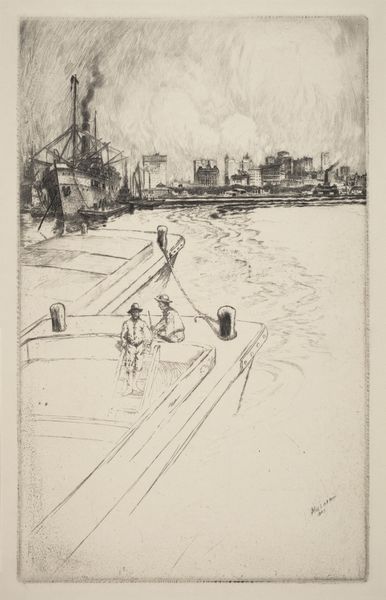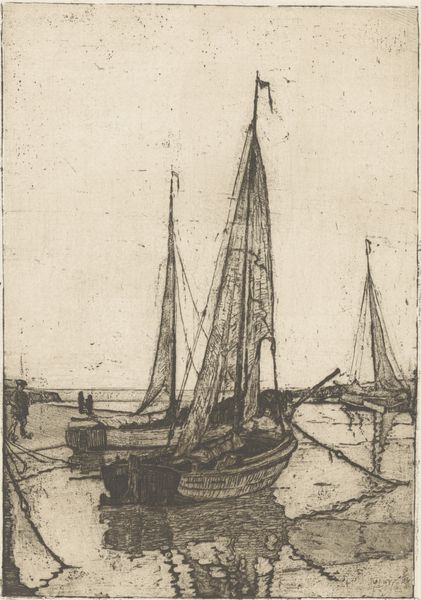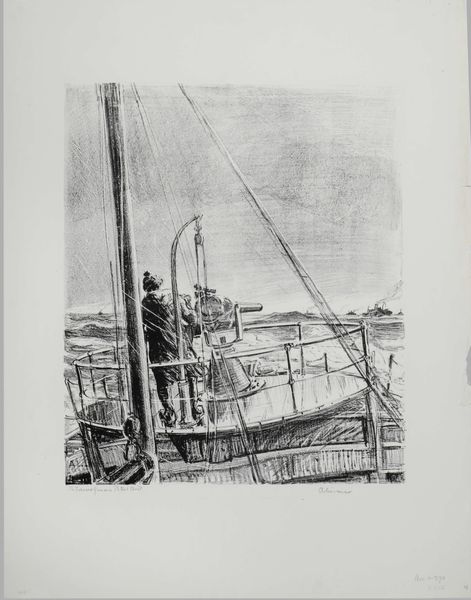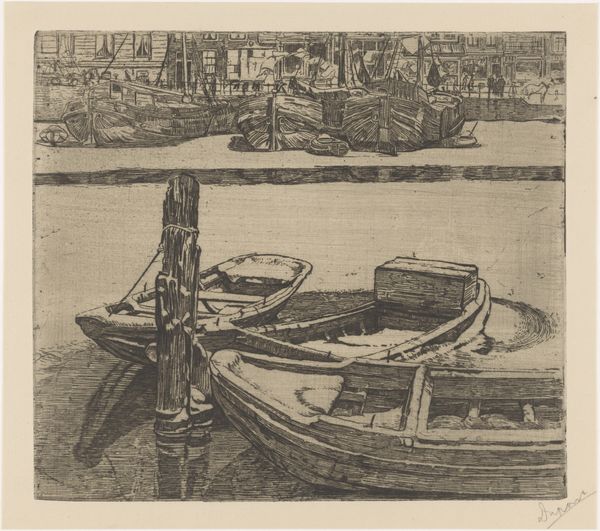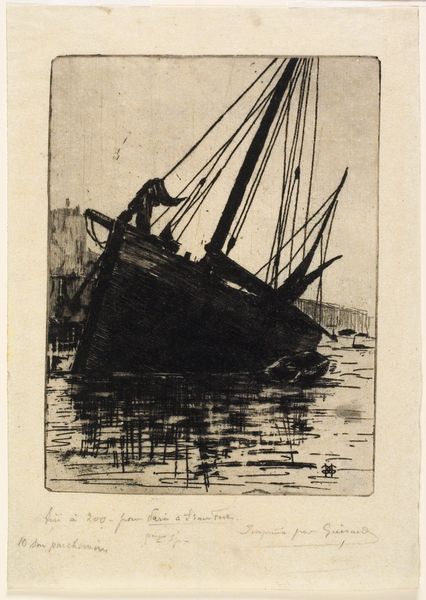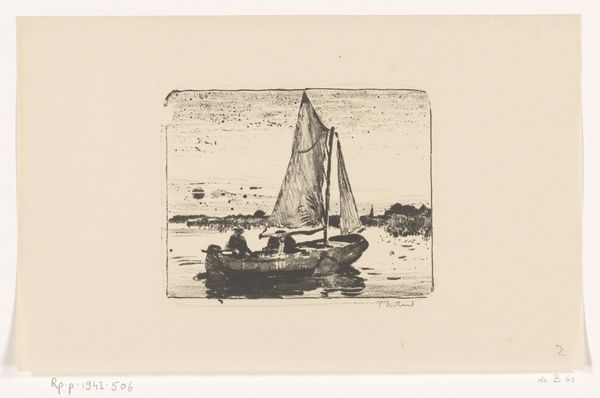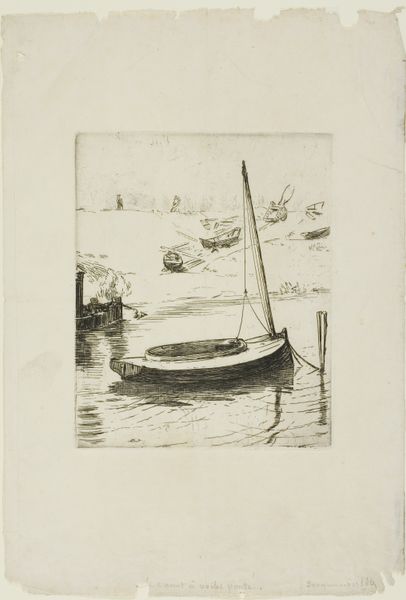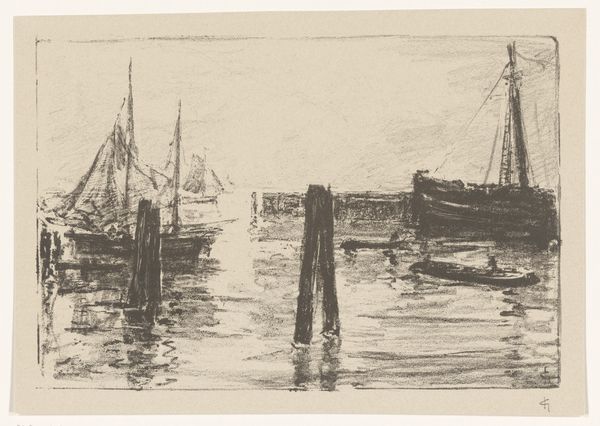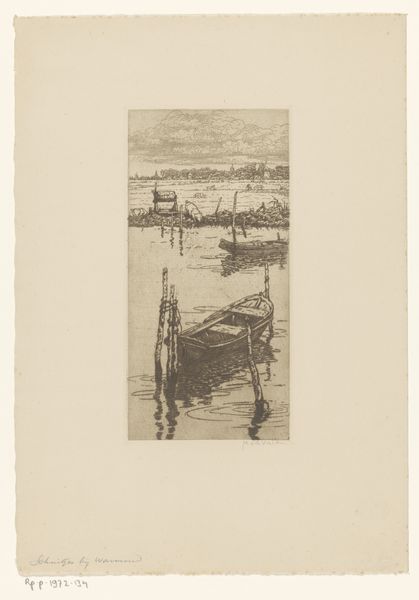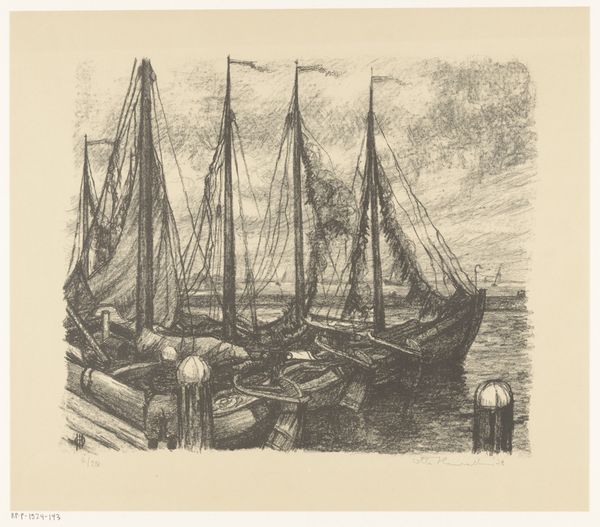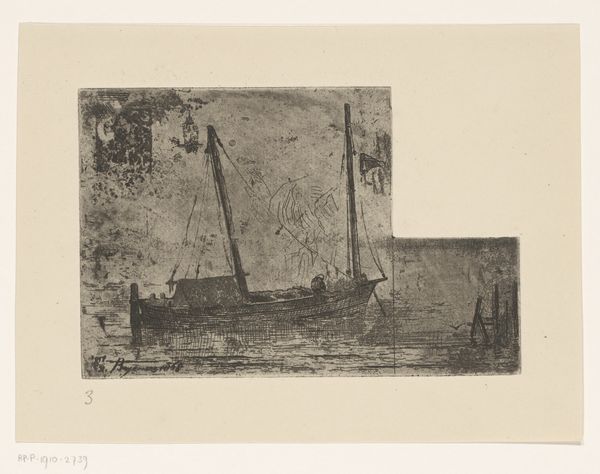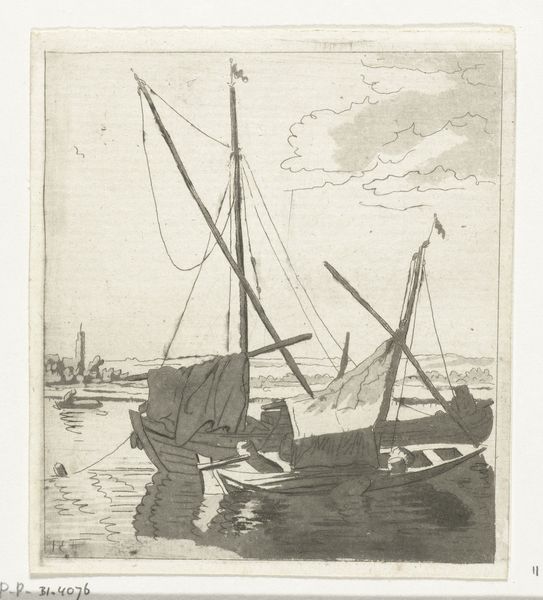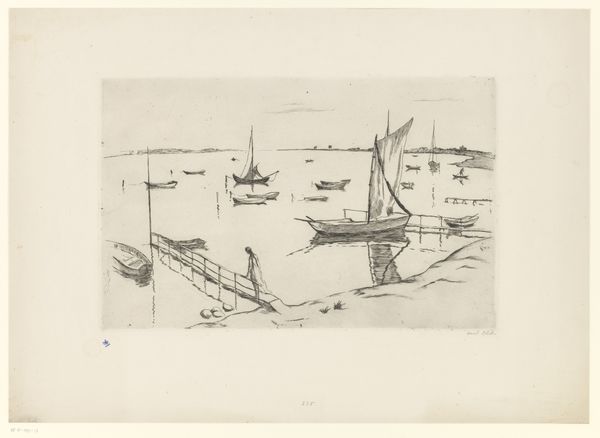
drawing, print, etching, paper
#
drawing
# print
#
impressionism
#
etching
#
landscape
#
paper
#
england
Dimensions: 78 × 70 mm (image/plate); 104 × 78 mm (sheet)
Copyright: Public Domain
Editor: Theodore Roussel's etching, "Pleasure Boats, Chelsea," from 1888-1889, captures a scene that feels both bustling and quiet. It’s striking how he manages to convey depth and atmosphere with such minimal lines. How would you interpret this work through a historical lens? Curator: It’s interesting to consider how Roussel positions this scene, focusing on leisure activities of the time. Pleasure boating became increasingly popular in the late 19th century for the emerging middle class in England, which could escape London's heavily industrialized spaces. It also served as the setting for social interplay and seeing-and-being-seen, something that paintings in earlier decades typically placed within domestic interior spaces or on country estates. Does the visible city skyline play any part in your response to the work? Editor: Yes, now that you mention it, the proximity to London makes the "pleasure" aspect more poignant - it’s an escape, not a lifestyle. Were there particular debates about public spaces during that time that this piece might be referencing? Curator: Absolutely. Think about the debates around access to the Thames, who could use it for leisure, and the regulations surrounding its use, along with its historical function for trade and labour. Roussel doesn't explicitly critique the industrial presence; however, the scene does speak to a larger conversation about the changing use of urban spaces and how different social classes interacted with them. Does viewing this image prompt you to imagine the types of people enjoying the Thames in the 1880s? Editor: Definitely. It brings up questions about who had the privilege to enjoy leisure time and resources like boats and access to the river. Thinking about the piece in that social context adds a whole new layer. Curator: Precisely. By exploring how social and economic conditions shaped artistic production and public perceptions of places, it enables us to appreciate how art plays an essential role in recording and responding to those specificities. Editor: I’ll remember that the next time I look at art - consider how public spaces, like the Thames, reflect these societal forces and the politics surrounding art's display in places like the Art Institute of Chicago. Thank you.
Comments
No comments
Be the first to comment and join the conversation on the ultimate creative platform.
